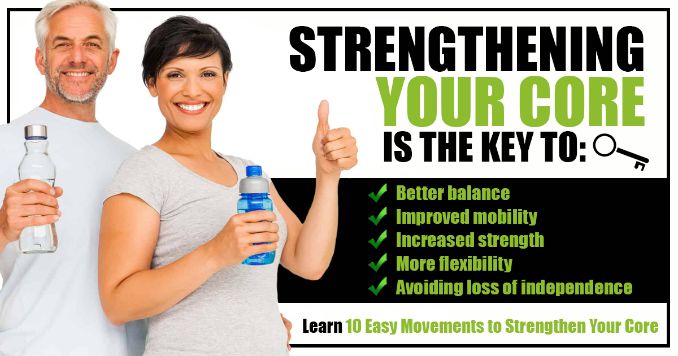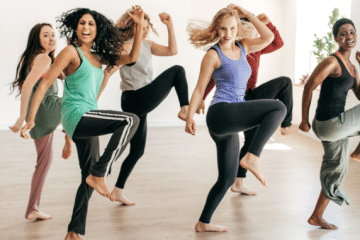Shoulder Rolls
Core stretches are crucial for strengthening your abdominal muscles and supporting your spine, benefiting anyone from athletes to those aiming to enhance their posture.
This article explores various core stretches, including planks, bridges, Russian twists, and bird dogs, each targeting different core areas.
Regular practice of these stretches can increase strength, flexibility, and overall fitness. You'll experience improved athletic performance, a reduced risk of injuries, and relief from back pain.
Embrace these exercises to elevate your core training and unlock your body's full potential.
Are Core Exercise Necessary?
Core stretches are critical yet often neglected in many fitness routines, overshadowed by strength training and cardio.
These stretches are essential for preventing body imbalances and reducing injury risks because core muscles are vital for maintaining balance, stability, and posture.
Integrating core stretches can improve your posture, enhance athletic performance [³] and provide a solid foundation for more powerful and stable movement in various activities like weightlifting, running, and sports.
Additionally, core stretches can help alleviate lower back pain by strengthening the muscles supporting the spine, easing tension, improving alignment, and enhancing overall mobility.
Benefits Of Incorporating Core Stretches Into Your Fitness Routine
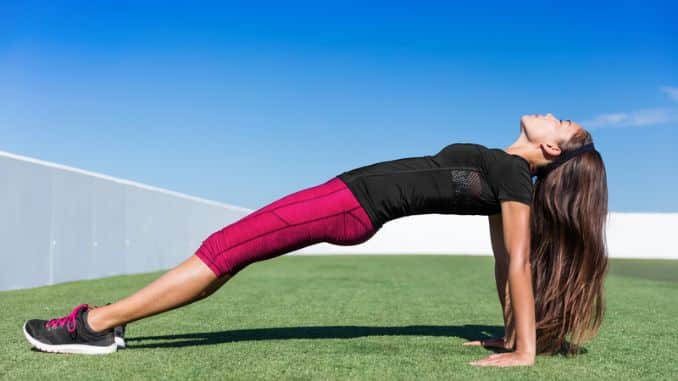
There are numerous benefits to incorporating core stretches into your fitness routine. Let's explore some of the key advantages:
1. Improved Core Strength
Core stretches strengthen your abdomen, lower back, and hips, enhancing balance and stability for better body strength.
2. Enhanced Flexibility
Regular core stretching increases flexibility, essential for proper posture, injury prevention, and optimal movement range.
3. Better Posture
Strengthening spine-supporting muscles through core stretches improves posture [⁴] and reduces back and neck pain risks.
4. Reduced Risk Of Injuries
A strong core is essential for overall physical health. It acts as your body's foundation, providing stability and support. Just like a sturdy base for a building, a strong core helps prevent injuries, improves balance, and enhances performance in daily activities and sports.
5. Improved Athletic Performance
Core strength is crucial for athletes, aiding in power generation, balance, coordination, and overall performance.
6. Alleviation Of Lower Back Pain
Core stretches can relieve pain by strengthening core muscles, reducing strain, and enhancing life quality.
By incorporating core stretches into your fitness routine, you can experience these benefits and improve your overall fitness level.
Common Misconceptions About Core Stretches

Before we dive into the different types of core stretches, let's address some common misconceptions about them:
- Core Stretches Are NOT Just For Athletes: While beneficial for athletes, core stretches are valuable for everyone. They enhance stability, posture, and strength, making them suitable for individuals of all fitness levels and backgrounds.
- Core Stretches Target More Than Abs: Core stretches engage the abdominal muscles and the obliques, lower back, and hip muscles. This comprehensive engagement ensures a well-rounded core workout.
- Core Stretches Can Be Exciting: Core stretches can be dynamic and interesting, with numerous variations and modifications available. Incorporating different exercises can keep your routine engaging and enjoyable.
- Core Stretches Aren't Limited to the Gym: Core stretches can be performed anywhere without special equipment. They are easily integrated into daily routines anywhere — at home, the gym, or the office.
Now that we've addressed these misconceptions, let's explore the different types of core stretches and how to perform them correctly.
How To Stretch Core Muscles
When performing core stretches, it's important to maintain proper form and technique to ensure you're targeting the correct muscles and minimizing the risk of injuries.
Here are some tips to keep in mind:
- Engage Your Core: Always activate your core by drawing your navel towards your spine before starting a stretch. This will stabilize your spine and effectively target the correct muscles.
- Maintain Proper Alignment: Keep your spine neutral and avoid arching or rounding your back during exercises like planks or bridges to prevent strain and ensure proper muscle engagement.
- Breathe Properly: Inhale deeply through your nose before starting and exhale slowly through your mouth while holding a core stretch. Proper breathing relaxes muscles and enhances stretch effectiveness.
- Start Slow And Build Up: Begin with basic core stretch variations and slowly increase intensity [¹] to allow your body to adapt and avoid soreness or injuries. Progress to more advanced variations as you gain comfort and confidence.
By following these tips, you can ensure you're performing core stretches correctly and maximizing their benefits.
Best Core Stretches
If you're new to core stretches, it's essential to start with exercises that are suitable for beginners.
Here are some core stretches that are ideal for individuals who are just beginning their fitness journey:
Warm Up
1. Shoulder Roll
Begin in an upright standing position with your feet shoulder-width apart, maintaining good alignment with your head, shoulders, hips, and legs. Engage your core. Lift your shoulders, then roll them down and back until you feel resistance in your right and left shoulder blades. Lower your shoulders to the starting position, relax, and repeat the movement in the opposite direction—complete 10 repetitions.
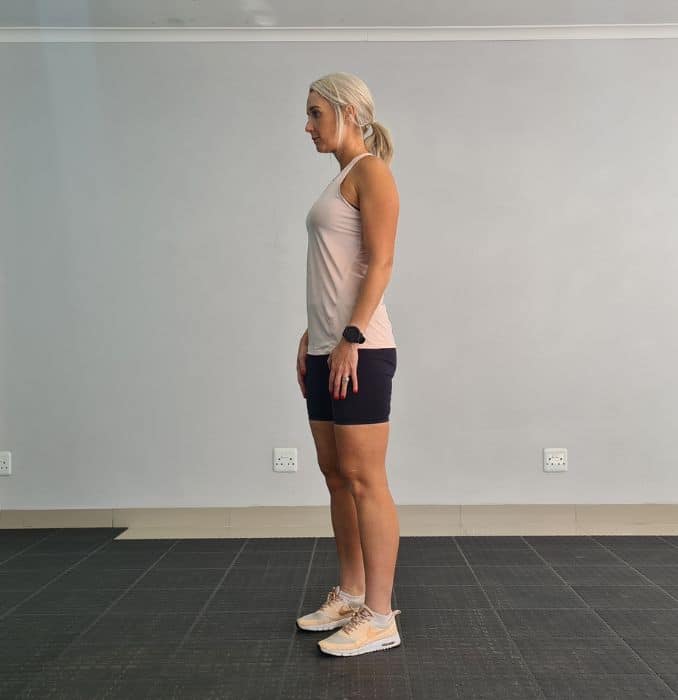 |
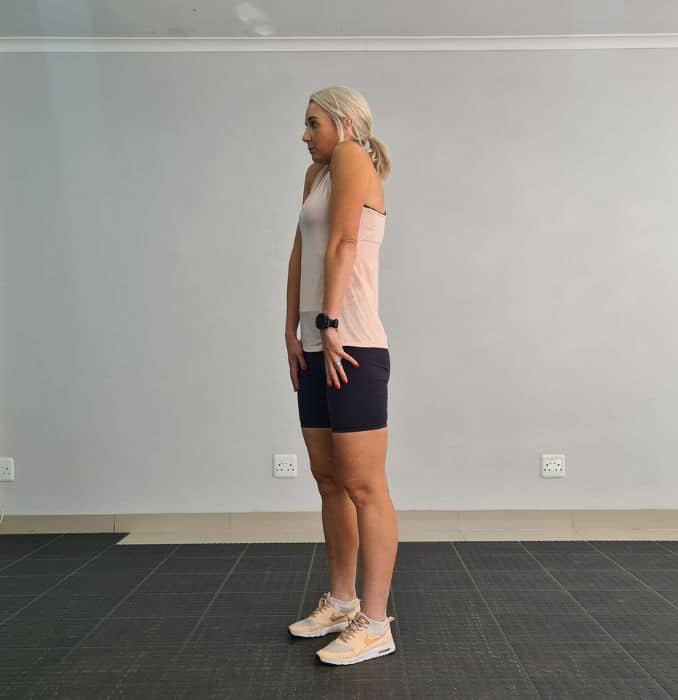 |
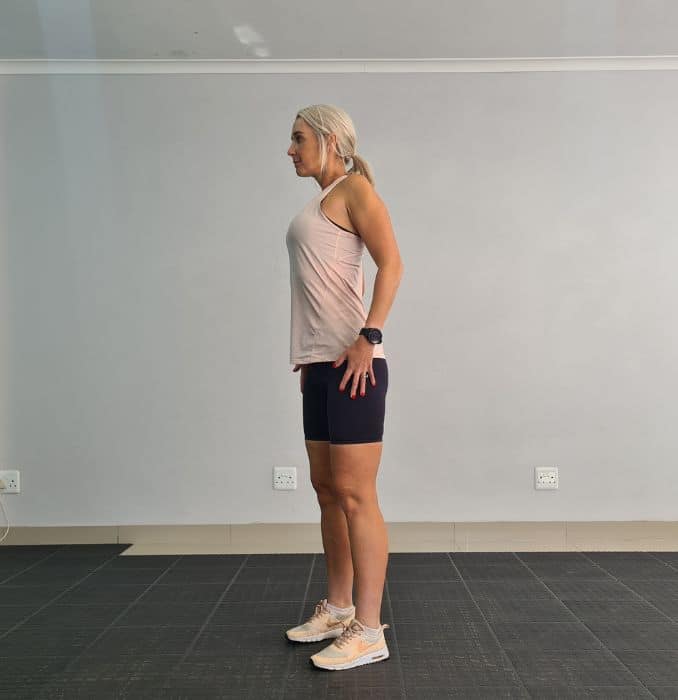 |
2. Standing Twist
Begin in an upright standing position with your feet shoulder-width apart, maintaining good alignment with your head, shoulders, and hips. Arms extended in front of your body with your palms pressed together at chest height. Engage your core and twist your upper body as you open one arm to the side, keeping your hips locked in the forward position. Return to the starting position and repeat the movement on the opposite side—complete 10 repetitions.
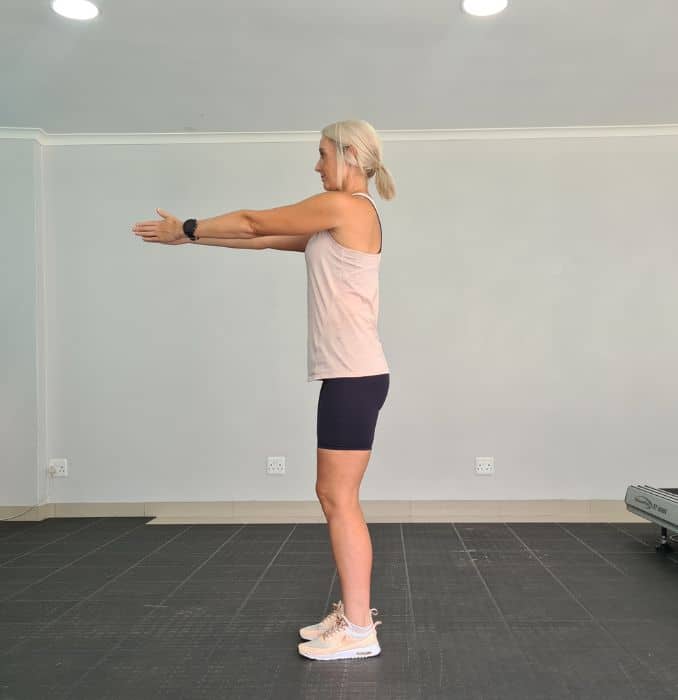 |
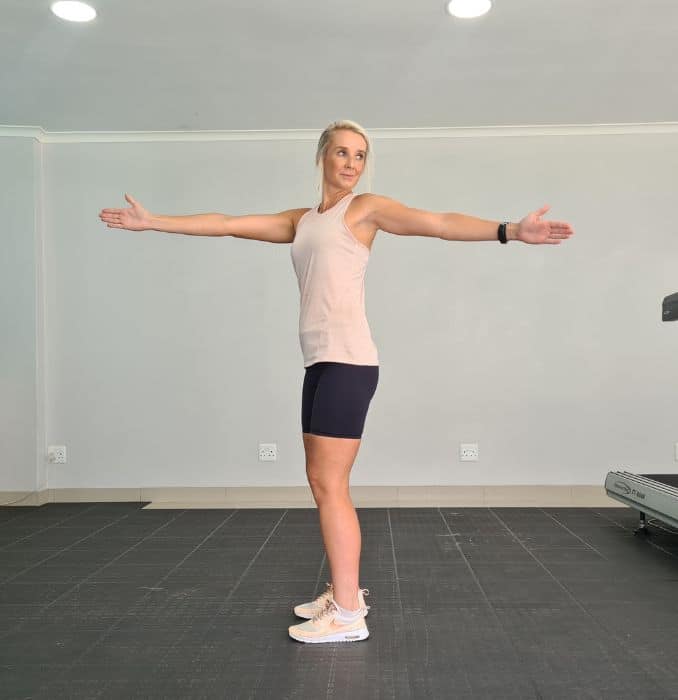 |
3. Overhead Reach
Begin in an upright standing position with your feet shoulder-width apart, maintaining good alignment with your head, shoulders, and hips. Place your hands at your sides. Engage your core and bend your upper body to the side, reaching over your head with your left arm. Return to the starting position and repeat the movement on the opposite side. Start with 10 repetitions on each side.
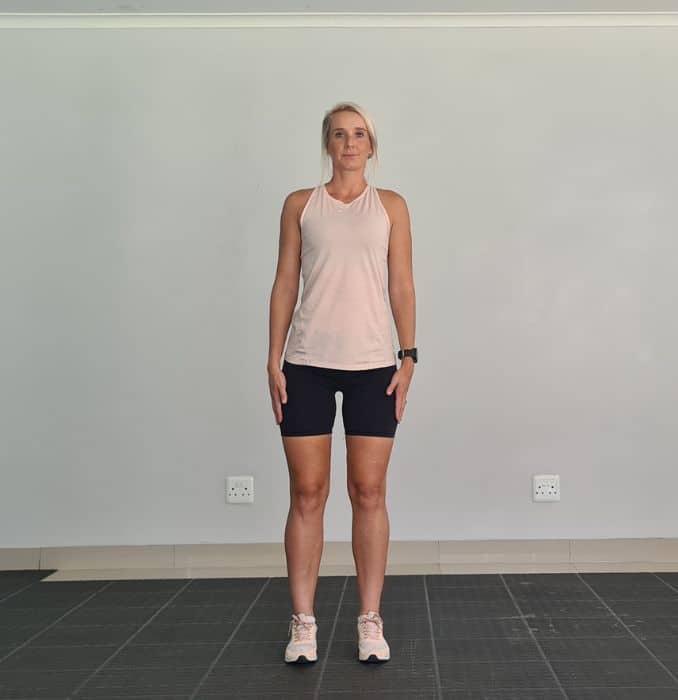 |
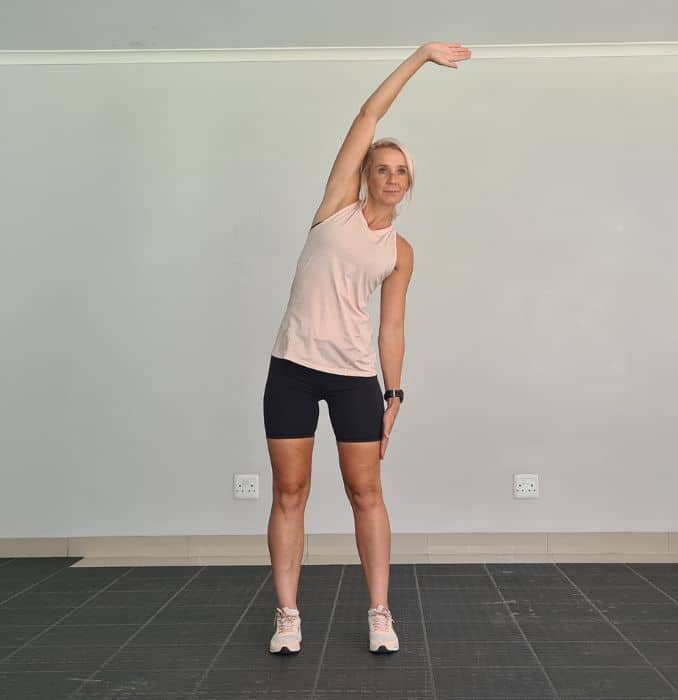 |
Routine
1. Crunches
Lie on your back on the floor with your left and right knee bent and your feet flat on the floor, relaxing your upper body and interlacing your fingers at the back of your head. Engage your core and gently lift your upper body, lower your upper body, and return to the starting position. Start with 3 sets of 10 repetitions.
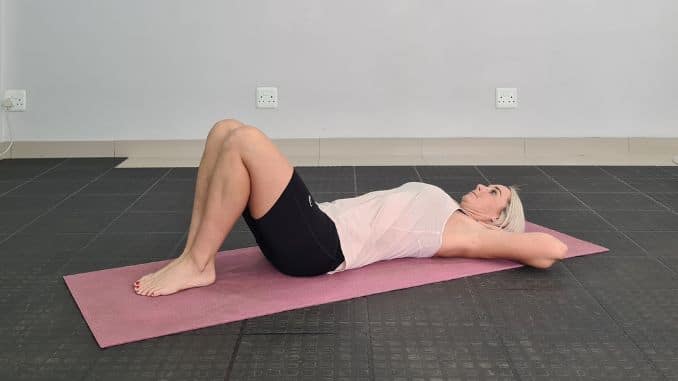 |
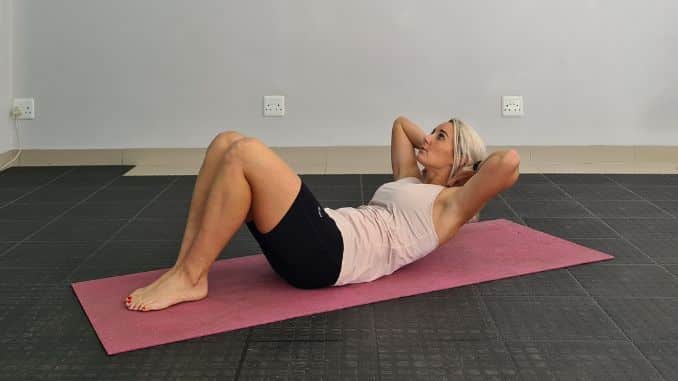 |
2. Hip Thrust
Lie on your back on the floor with your right and left knee bent and your feet flat on the floor, relaxing your upper body. Then, Place your arms on your side. Engage your core, then push from your heels to lift your hips, squeezing your glutes at the end position. Hold this position for several deep belly breaths through your nose and out through your mouth. Lower your hips to return to the starting position and repeat the movement. Start with 3 sets of 10 repetitions.
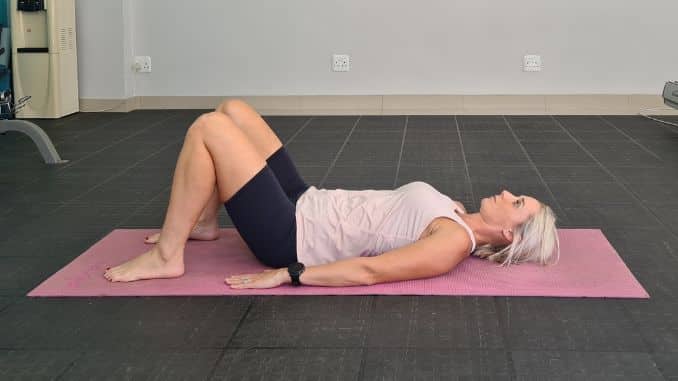 |
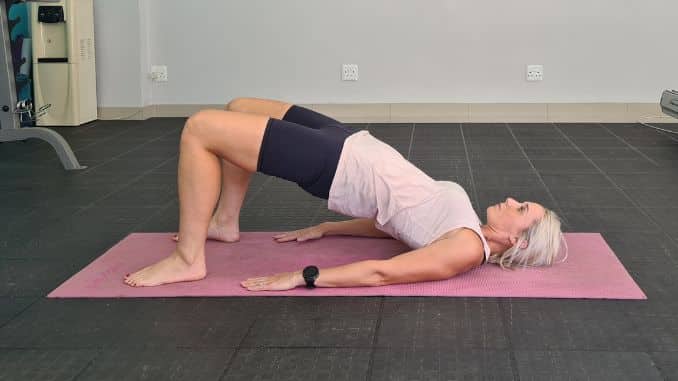 |
3. Side Crunch
Lie on your side on the floor with your knees bent together, relaxing your upper body and interlacing your fingers at the back of your head. Contract your abdominal area. Engage your core and gently lift your upper body, lower your upper body, and return to the starting position. Start with 3 sets of 10 repetitions.
 |
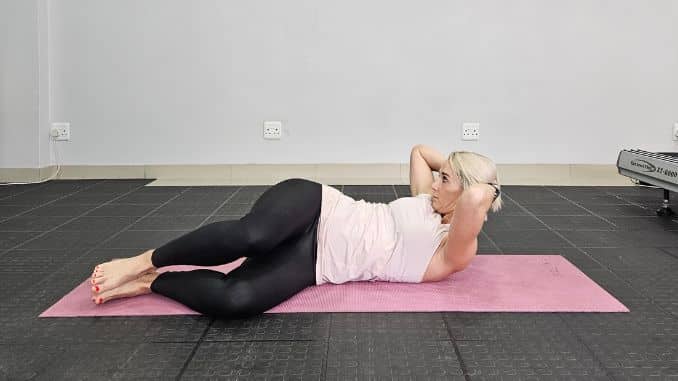 |
4. Forearm Plank
Begin in a 4-point position with your knees below your hips and your hands beneath your shoulders. Engage your core. Move into a forearm plank position, maintaining good alignment in your upper body. Hold this position for several deep belly breaths through your nose and mouth. Relax and return to the starting position.

Cool Down
1. Child's Pose
Begin in an upright kneeling position with your knees wider than the shoulder-width apart and your big toes touching each other. Engage your core. Shift your hips back to your feet and extend your arms straight in front. Drop your forehead down, relaxing your mid-back area for a light stretch. Then, take some deep belly breaths through your nose and out through your mouth. Hold this position for a few seconds. Relax and return to the starting position.
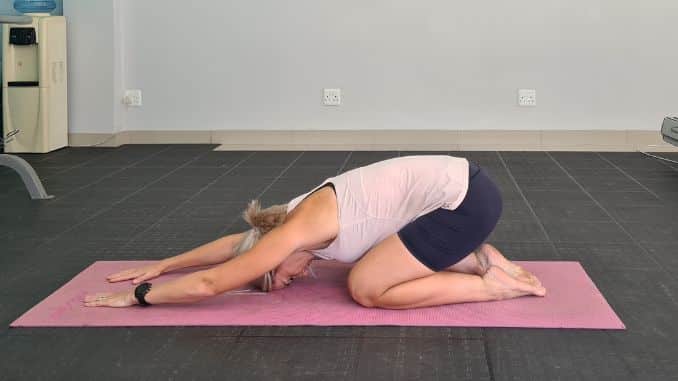
2. Cat-Cow
Begin in a 4-point position with your hands beneath your shoulders and your knees under your hips. While maintaining good alignment of your head, shoulders, hips, and knees. Engage your core. After that, arch your back as you tilt your head upward. Then, tuck your tailbone and round your spine upward as you lower your head downward. Repeat the sequence of movements. Complete 10 repetitions.
 |
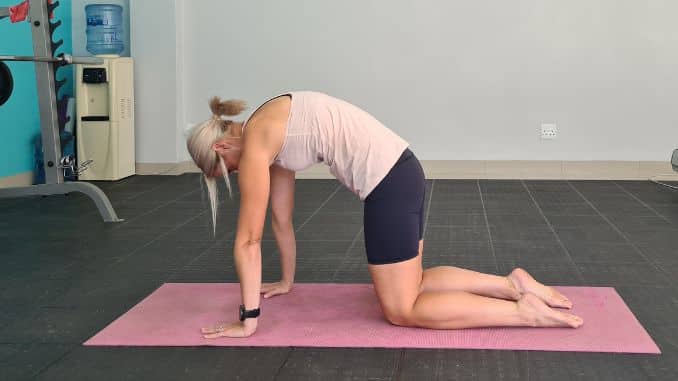 |
3. Side Bend
Begin in an upright sitting position with your right and left leg crossed in front of your body. Maintain good alignment with your head, shoulders, and hips. Plant your left hand on the floor at your side for support as you bend your upper body to the left side. Engage your core, extend your right arm overhead, and gaze toward the ceiling. Then, repeat the movement on the opposite side.
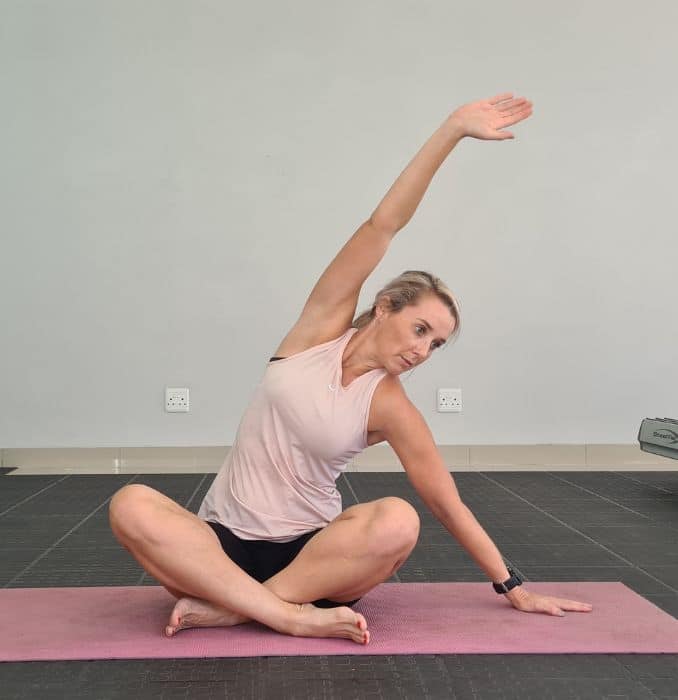
4. Seated Spinal Twist
Begin in an upright sitting position on the floor, with your legs crossed, while maintaining good alignment of your head, shoulders, and hips. Engage your core and place one hand at the back. Then, twist your upper body to the side as you place the opposite hand on one knee. Hold the position for a couple of seconds, and take several deep belly breaths, in through your nose and out through your mouth. then return to the starting position.
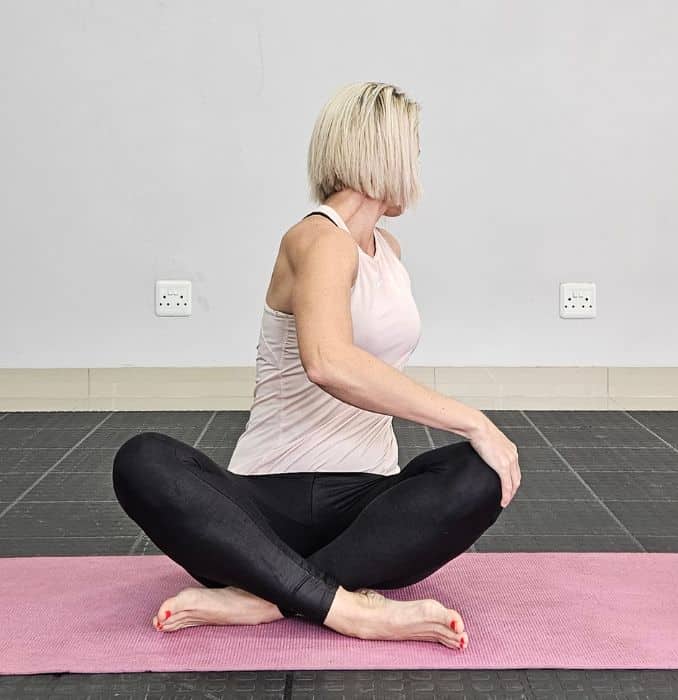
These beginner-friendly core stretches will help you build a strong foundation and prepare your body for more advanced core exercises.
Recommended Frequency And Duration Of Core Stretches
For effective core stretching, aim to include exercises in your routine two to three times per week to allow muscle recovery and adaptation.
Hold each stretch for 20 to 30 seconds, gradually increasing the duration as your exercise comfort improves.
Always listen to your body and adjust the frequency and duration based on your fitness level and exercise response.
If you experience any pain or discomfort, cease the stretches and consult a healthcare professional.
Conclusion: Make Core Stretches A Priority In Your Fitness Routine
Incorporating core stretches [²] into your fitness routine is essential for building a strong, stable foundation that enhances all aspects of physical health.
Prioritizing top core exercises can significantly improve strength, posture, and stability. These exercises are vital for everyone, from beginners to advanced athletes, boosting athletic performance, reducing injury risks, and supporting spinal health.
Committing to core training helps develop a balanced, resilient body equipped for daily tasks and rigorous challenges. This focus on core strength advances physical capabilities.
It contributes to long-term health and wellness, ensuring a comprehensive fitness approach emphasizing core stability as a key component of a healthy lifestyle.


